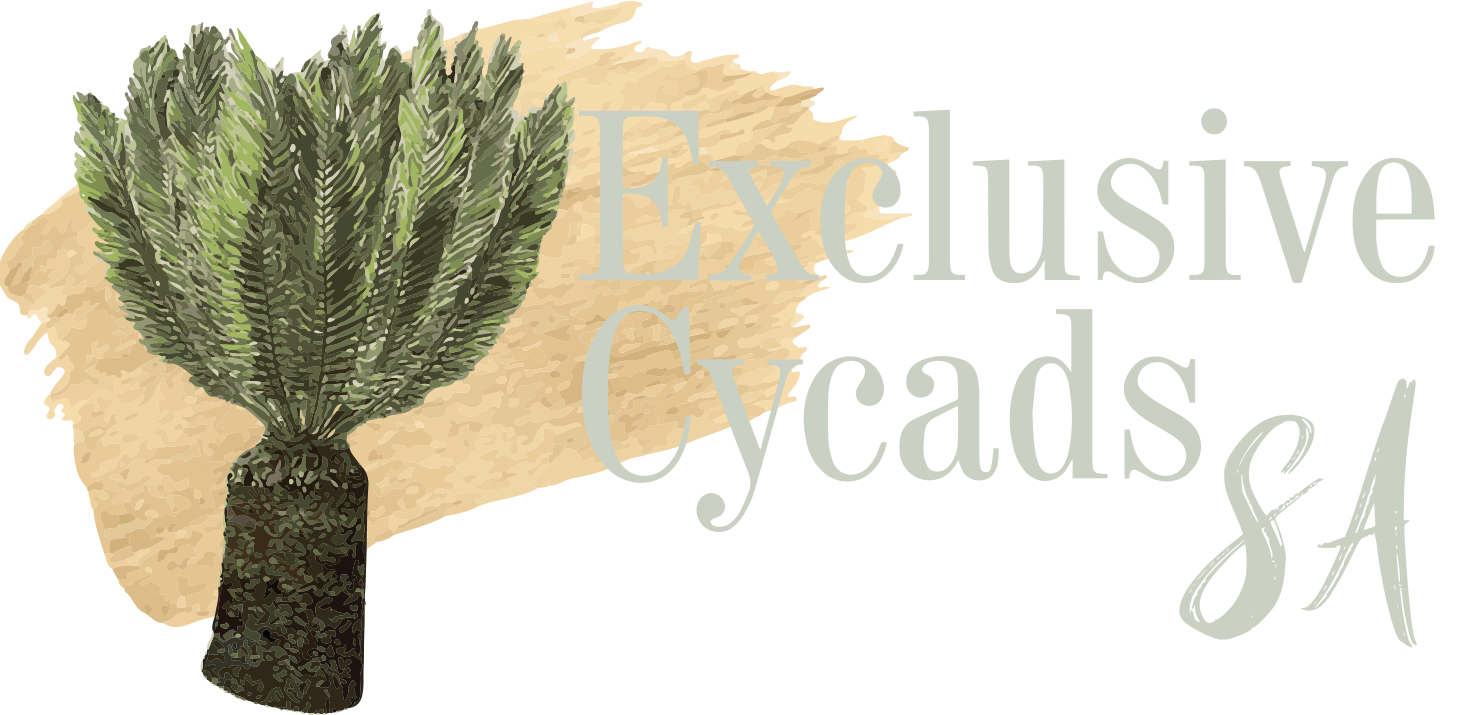E. brevifoliolatus was described as a new species of Encephalartos in 1995 by Dr P Vorster. At that stage Dr Vorster was head of the Botanical department at Stellenbosch University. This unique species was brought to the attention of Dr Vorster by Mr. SP Fourie – chief of the former Transvaal directorate of Nature and Environmental Conservation. Only five individual plants were found scattered over a few kilometres. The conservation status of this species is therefore very precarious due to the distance between plants and no evidence of seed production in the wild has been found. According to nature conservation this species is now extinct in the wild.Only a few well-known plants are in private collections and at this stage only one has produced a female cone. Due to the fact that only a few of these plants exist and consequently only have been seen by a few people thus far, unscrupulous cycad dealers have sold many plants from various forms of E. laevifolius which originate from the Wolkeberg and Strijdom Tunnel areas as E. brevifoliolatus, to cycad collectors.

Prospective buyers of E. brevifoliolatus are advised to read the original botanical description published by Dr P Vorster in the South African Botanical Journal of 1996, 62 (1): 61 – 64. (Article: Encephalartos brevifoliolatus (Zamiaceae): a new species from the Northern Province.) In purchasing such a rare species, it is recommended to ensure that the seller is a reputable cycad dealer. Dr P Vorster studied the resemblance and differences between the various colonies of laevifolius in the Wolkeberg (North East Drakensberg) and E. brevifoliolatus intensively. Some variation in the length / width ratio of the leaflets between populations of E. laevifolius exists along its geographical spectrum, but nowhere does it approach that of E. brevifoliolatus.
The following obvious differences between E. brevifoliolatus and related species are:
- Conspicuously wider and shorter leaflets brown woolly surface.
- Leaflets have revolute margins.
- Greater number of veins of each pinnae.
- Male cones are densely velvety with a slightly different shape as the cones of the laevifolius colonies. (Bigger difference in female cones.)
Female Cone E. brevifoliolatus

Female Cone E. laevifolius - Wolkeberg

Emerging Male Cones
- Cones of E. brevifoliolatus are produced in spring and early summer where cones of laevifolius are produced in late summer and autumn. The argument of some people that E. brevifoliolatus is a part of the Wolkeberg laevifolius is therefore refuted.

- Leaflets overlap incubously where in the majority of laevifolius group leaflets do not shield one another.

- New set of leaves on an adult plant.

- E brevifoliolatus seedling - new leaves (Broad overlapping leaflets)
b. Leaves are 80cm – 90cm long, rigid and straight with a slight recurve towards the apices. Petioles are unarmed with an initial whitish felt-like layer of fine hair that is lost at maturity, becoming glabrous with a yellowish colour.


Herbarium material – E. brevifoliolatus in Kew Gardens – Supplied by University of Stellenbosch

c. Leaflets are dark green, falcate (sickle shaped) with entire margins, narrowly ovate with acute pungent apices. The margins of the leaflets are typically revolute with 14 – 16 finely ribbed veins at the back. Leaflets are typically 60mm – 80mm long and 10mm – 12mm wide giving it a length with ratio of 6 – 7. (Laevifolius ratio is 9 – 14.)
Different Leaflets
I) E. brevifoliolatus
II) E. laevifolius
III) E. laevifolius Wolkeberg
IV) E. laevifolius Downs
II) E. laevifolius
III) E. laevifolius Wolkeberg
IV) E. laevifolius Downs


The leaflets are spaced 8mm – 10mm apart, shield one another incubously, directed toward the leaf apex at an angle of about 45˚ with an angle of about 135˚ to the opposing leaflet.
d. Male cones are very narrowly ovoid covered with very short whitish felt-like hair.











